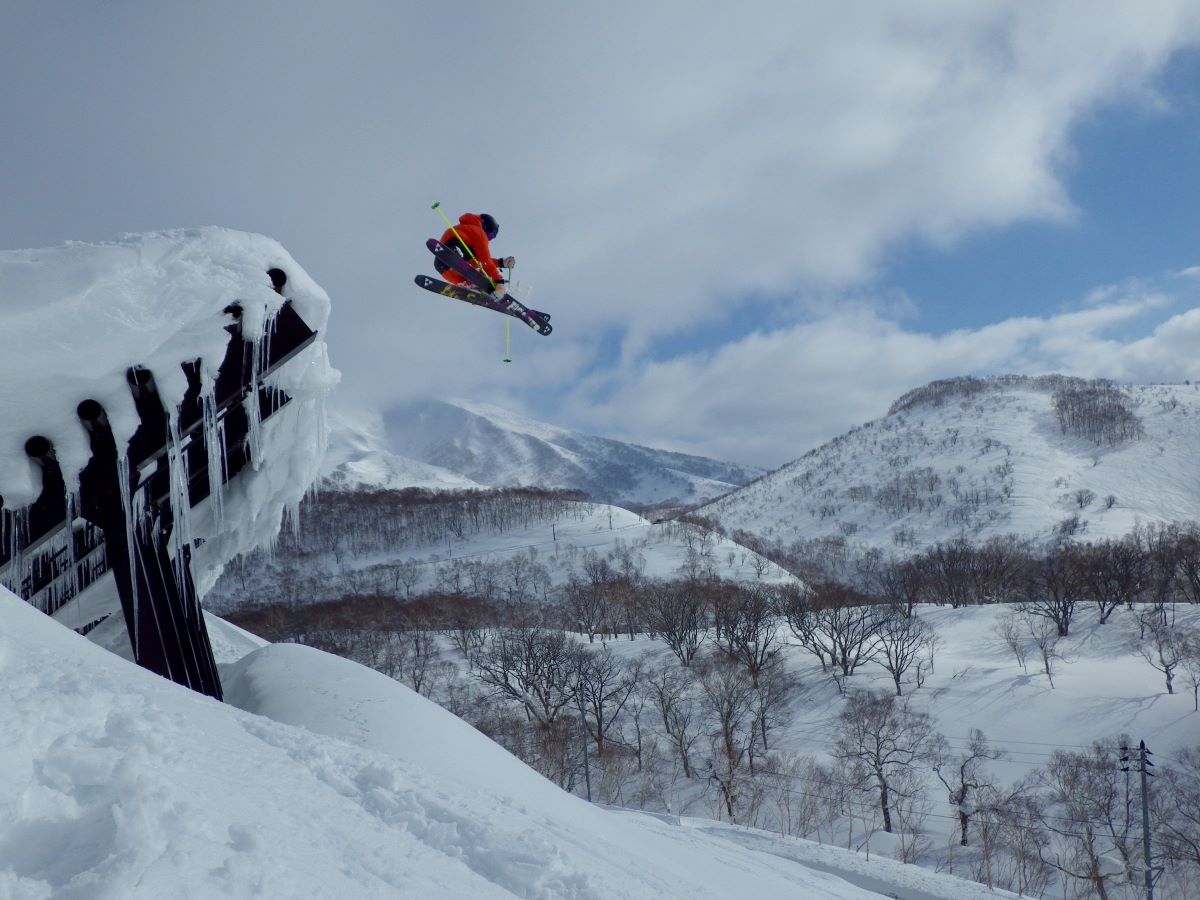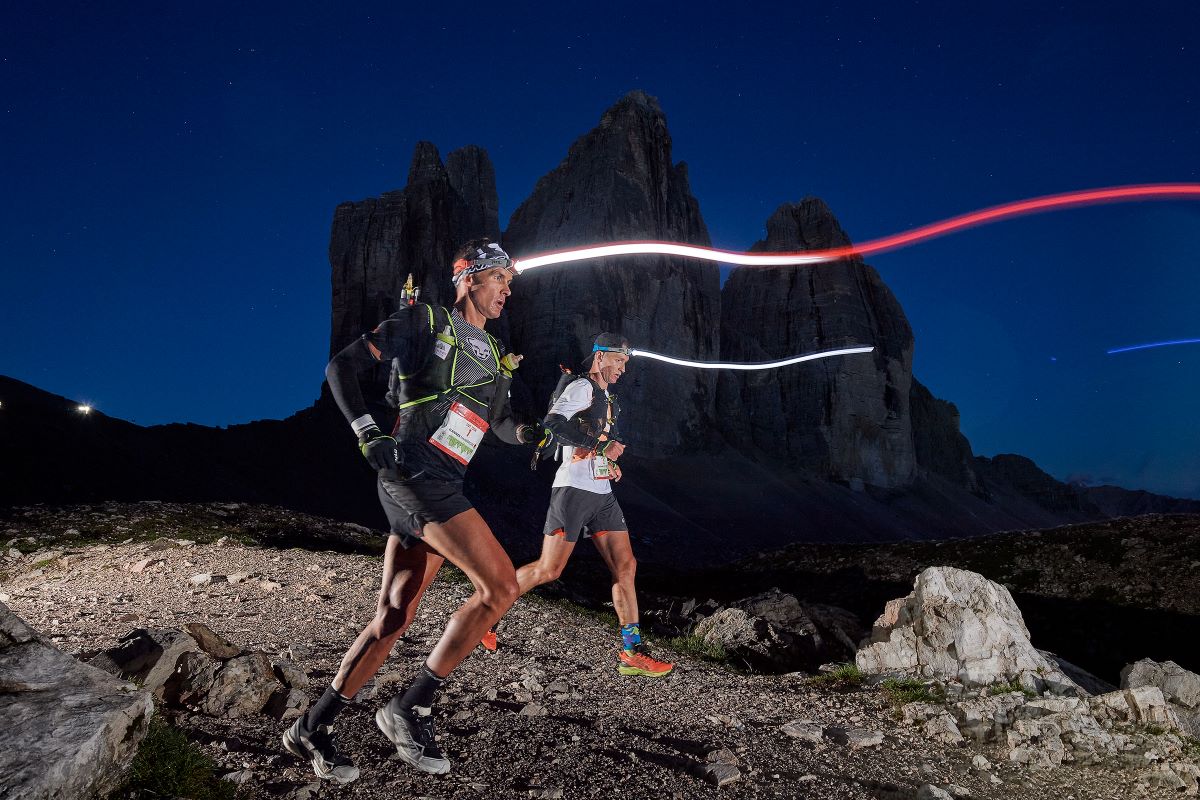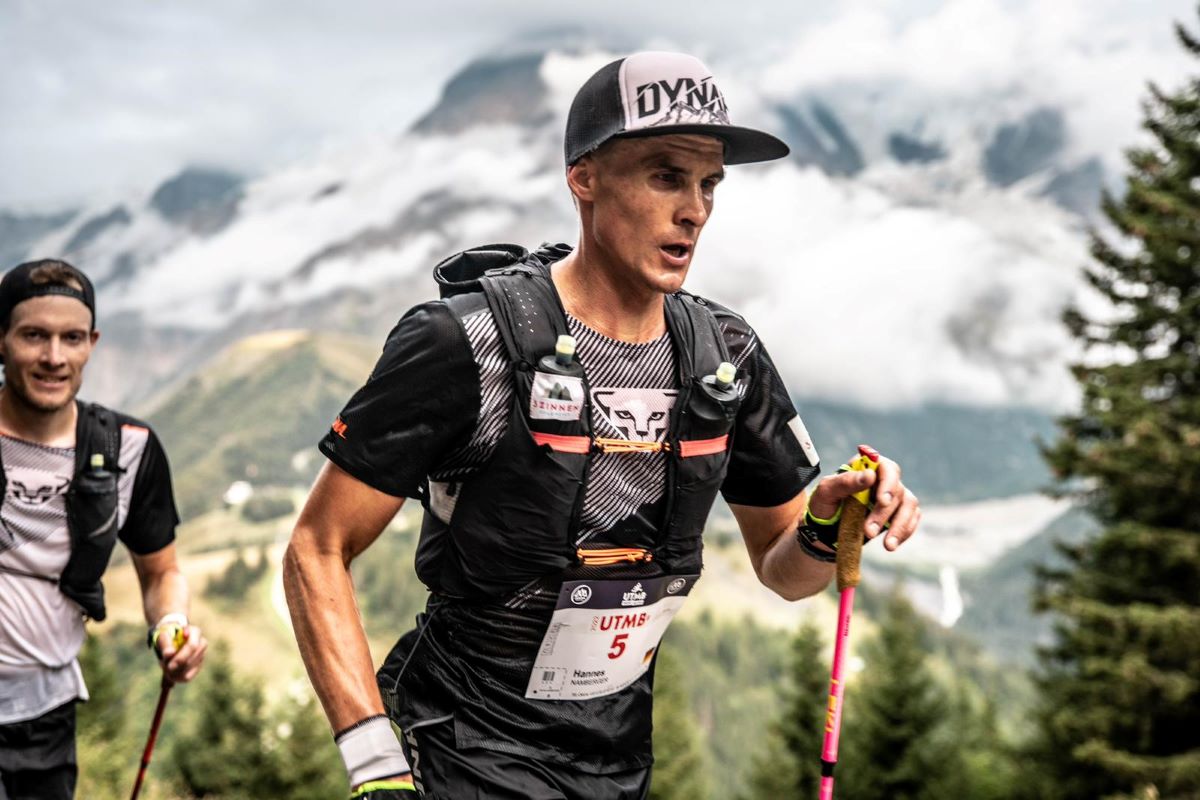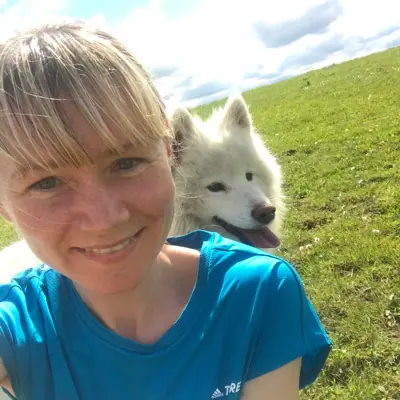On a hot day in August 2021, I along with thousands more ultrarunning fans lined the streets of Chamonix, France, to watch UTMB’s top finishers. Five men had already completed the 100-mile race encircling Mont Blanc, and the next one across the line was Hannes Namberger — a relative newcomer to elite-level ultrarunning.
He had just smashed his first 100 miler, and brimmed with enthusiasm while telling the finish line interviewer about his day. It was evident to all present that his was a name we would be hearing a lot more of in the months and years to follow.
Hannes Namberger grew up in the mountains of Bavaria, on the border between Germany and Austria. Although now one of the world’s top ultra-trail runners, he started his sporting life in skiing, having pursued Alpine skiing from childhood. He turned professional while still very young, and continued to compete until the age of 21.
He recounts, “It was only in the winter, so in the summer for exercise, I tried to do weightlifting, endurance training, coordination, balance — most of the time in the gym. I couldn’t run because my legs were too big and too heavy!”
Namberger’s sporting talents also opened doors for him into his second career as a police officer. He said, “In Germany, if you are a professional skier and you are good you go to the police or the army, that’s your main job. This job gives you safety, but all year you have time for your sport.”
Namberger stood back from professional skiing at age 21 and said, “I had a little time off. I did things that I couldn’t do as a professional skier — traveling, partying, enjoying life.” In the time between his ski career and discovering trail running, he also kept busy with hiking and climbing and said, “The important thing was always to be in the mountains.”
As for many, as a natural progression from hiking and other mountain activities, trail running eventually found him. He skipped past the shorter distances and his first trail race — in 2015 — was the 52-kilometer Karwendelmarsch in Austria. Although he finished in the top 1% of the field, he reflected with hindsight that going straight into an ultramarathon distance was too much, and that his body needed more time to adjust to the demands of a new sport.
He said, “My body wasn’t prepared for running. My weight was too heavy. Fifty-two kilometers, it was way too much. The body needs to adapt to a new type of sport and it takes a lot of time.”
He suffered niggles for a time, including bouts of runner’s knee, but by his second year in the sport, the teething problems he felt initially were beginning to correct themselves.
He said, “The second year I did about five or six competitions. The body felt better, the motivation was always high, but I was learning more about nutrition and how to run an ultra. I had no idea how to do this new sport, but I was always motivated! And that was the most important thing.”
Namberger didn’t begin working with a coach until 2020 and claims to have been somewhat in the dark about ultrarunning training and preparation before that, and was just enjoying the adventure.
He said, “I had no idea. I did long runs just for fun, but yeah, no idea!” Despite his haphazard approach, he was getting noticed, and in 2018 was invited to join the German team for the 33k World Long Distance Mountain Running Championships in Poland. He was also knocking on the door of some big results in ultrarunning — taking 10th in the 2019 Transvulcania Ultramarathon and 12th in the CCC that same year.
The year 2020 marked a breakthrough period for Namberger, despite the cancellation of many large-scale events. He recalls, “For me, it was not really a COVID-19 year, I had no break, I was always looking for races.”
He also took on a fastest known time (FKT) project in Bavaria — the Watzmann Traverse. The route covers 23 kilometers with 2,300 meters of climb, up and around the Watzmann mountain, and is normally completed over two days.
He said, “It is a perfect loop for an FKT. There is 2,000 meters of climb at the start, then you have a ridge for three kilometers. It’s very technical, normally it’s crossed with a via ferrata, where you have ropes to hold on. Then there is a really technical descent, and finally 10 kilometers of flat running at the end. So it’s a really good loop to test your skills.”
Namberger completed the route unsupported and took the overall FKT in 3 hours, 1 minute, but said that “three days later, someone smashed my record, with support, so it was kind of a cool story.” He still retains the unsupported FKT on the route.
While working around COVID-19 restrictions and cancellations throughout 2020, Namberger also managed to fit in wins in the 106k Pitz Alpine Glacier Trail and the 50k Mayrhofen Ultraks Zillertal — both in Austria — and a stack of other, smaller races.
When global events resumed in 2021, Namberger was primed to take his position amongst the top tier of international ultra-trail runners.
One of his first big international results was a win at the 2021 Lavaredo Ultra Trail by UTMB. He said, “Lavaredo was the first international long race for me. It was just my third race over the 100k barrier. The route was really good and everything just went right for me on the day.”
Regarding his race tactics, he shared: “I never lead the race at the start. I run my own race at the start, I don’t care what the other guys are doing. If I win, then it’s only at the end.” In the case of the 2021 Lavaredo, he moved into pole position on the final descent to the finish line and went on to set a new course record.

Hannes Namberger (front) on his way to winning the 2021 Lavaredo Ultra Trail by UTMB. Photo: Lavaredo Ultra Trail by UTMB
The 121k Lavaredo also served as a stepping stone, distance-wise, and come August 2021, Namberger was headed to Chamonix to take on UTMB as his 100-mile debut. He came in sixth, and arrived into a thronged Chamonix, with the masses out to witness Courtney Dauwalter finish just minutes after him in a new women’s course record.
He said, “For me, it was the coolest day. Because I could see how Courtney was running at the end and it was unbelievable. We had done 140k and we were on a big uphill and walking, and Courtney goes past and she’s running all the time and super fresh and she says, ‘Go! You’re doing so well!’ For me, it was the most impressive thing.”
Namberger alternated back and forth with Dauwalter for much of the latter part of the race — often getting in front of her on the descents to be passed again on the climbs. Although he held his pace well and eventually moved clear of Dauwalter, he found the distance and accumulated climb a physical shock to the system, having never run 100 miles before. He said, “My body was totally smashed, I had pain in my whole body.”
He went on: “The UTMB is a very special race. For me I had no idea about this race and it was maybe a good thing.” He revisited UTMB in 2022 and had a rare bad day at the office and didn’t finish. Namberger pointed to the self-imposed pressure to improve on the previous year’s time as one of the factors in his 2022 race starting to unravel.
He said, “This year I said, ‘Ok, I want to be faster.’ And so far in races [that he has completed more than once] I have always been faster than the year before, and sometimes that’s not good — if you always want to beat yourself.”
Following on from his successful 2021 UTMB, Namberger had a quick turnaround before racing the 115k Madeira Island Ultra-Trail, held at a later-than-usual date in November.
He said, “After UTMB I went directly to two weeks holidays, only with the bike to recover.” From there, he resumed training. Feeling good, he saw the November date as an opportunity to run Madeira — a race he hadn’t done in the past as its usual April date didn’t lend itself well to a training block in his home mountains, which are still under a blanket of snow. He wrapped up a terrific season with another win at Madeira.
This year has continued to be prosperous for Namberger. In April, he won the 106k Penyagolosa Trails CSP, then went on to win Lavaredo again in June — this time breaking his own course record.
Following on from disappointment at the 2022 UTMB, and with unforeseen circumstances preventing him from traveling as scheduled to the Trail World Championships 80k in Thailand, Namberger made a late-stage decision to sign up for Ultra-Trail Cape Town 100k, in November of 2022.
The course posed some unique challenges, but he relished the opportunity to test himself on something different and said, “Cape Town is a very technical race. They changed the course from the last edition, so now it has really technical uphills and downhills. You cannot use poles, so this was the one thing I had to change in my training before it.”
Namberger’s ski background has made him very efficient in the use of poles, and he said, “I run always with poles; I never did an ultra without them, but in Cape Town, they are useless as it’s so technical.”
During the race, Namberger fell into pace with Russian athlete Dmitry Mityaev. They ran much of the course together, working hard to stay in front of U.S. chasers Drew Holmen and Jared Hazen, and ultimately decided to finish together and share the win.
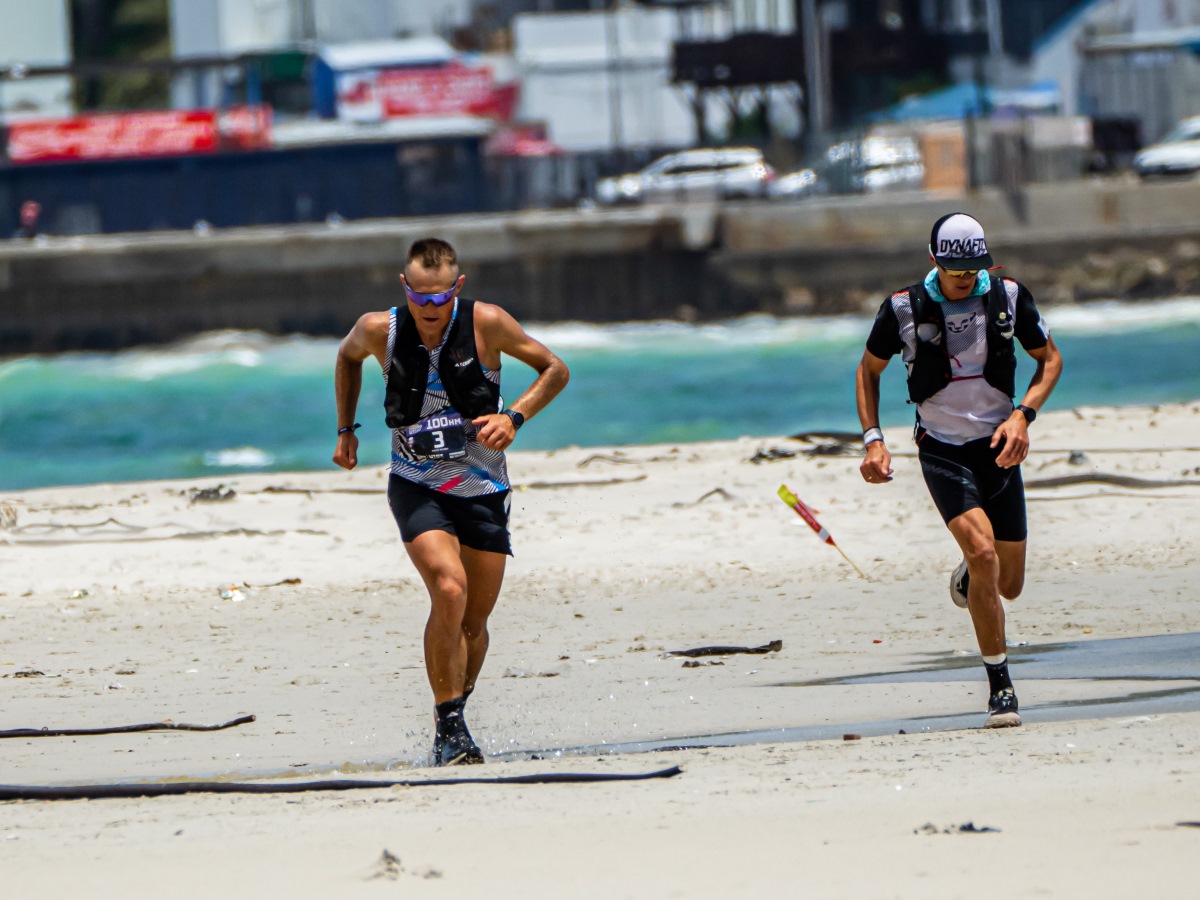
Hannes Namberger (right) and Dmitry Mityaev in the closing stages of the 2022 Ultra-Trail Cape Town 100k. Photo: @riffraff002/Raphael Weber
Namberger had been a short distance ahead of Mityaev for the opening stages of the race but said, “At kilometer 40, he caught me, and then we battled against each other. But by kilometer 80 of 100, we said we would work together.”
He recounts, “We had to push each other. He was fast on the uphill and I was fast on the downhill, and we had to work together to hold the gap to the Drew and Jared.” The technical parts of the course suited Namberger and Mityaev, but as the end section was more runnable, they felt the need to open up a big lead to stay in front.
He continued, “Those U.S. guys are so fast. The end was more runnable, and that would be good for those guys, but not for us. So we had to hurry up!”
Despite having had so many decisive victories all to himself, Namberger appreciated the uniqueness of sharing this one with an athlete he had known and respected for some time. He shared, “It was a cool day for us. I’ve known Dmitry for a long time, he was a role model for me. It’s amazing what he’s done in the past — on the skyrunning circuit and in TDS — and to finish the race with him was a cool experience.”
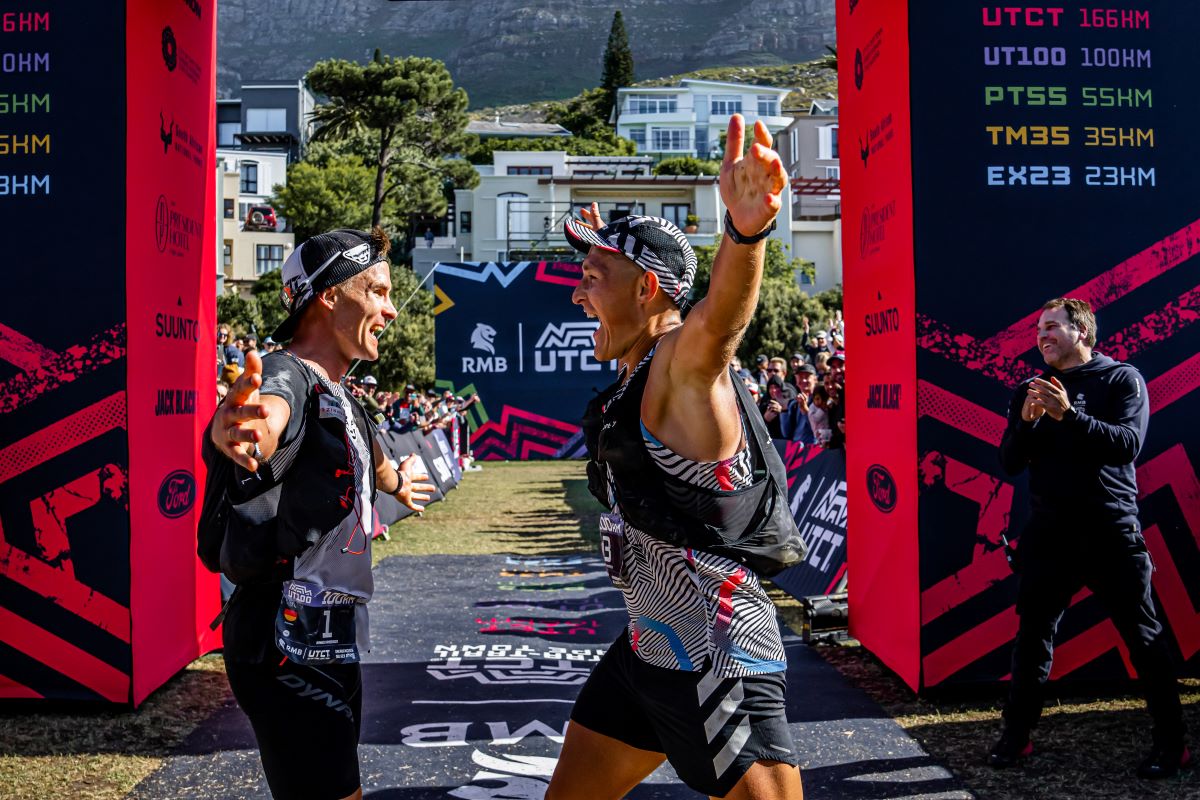
Hannes Namberger (left) and Dmitry Mityaev celebrate winning the 2022 Ultra-Trail Cape Town 100k. Photo: @riffraff002/Raphael Weber
Looking to 2023, high on Namberger’s priority list is to race the Trail World Championships in June, which will be taking place on his doorstep. He said, “They’re only one and a half hours from where I live — in Innsbruck, Austria.” Familiar with the route, he went on, “The course is really cool. It’s sometimes technical at the beginning. And for me, 85k with 5,500 meters of climb is great. I really hope I will be there.”
He also hopes to return to UTMB, but as for many — elite and recreational runners alike — the new system for entry which would require him to complete a UTMB World Series race first complicates matters somewhat.
He said, “At the moment when I look at the calendar, the [UTMB World Series] races don’t really motivate me to be there. When I go to a race, I want to perform, and I want to be with the best athletes in the world on the starting line.”
He also plans to introduce some short-distance races as part of his training, in order to keep up the intensity and speed. Although already becoming a household name in international ultrarunning, it is still very early days for Hannes Namberger, and it’s well worth watching this space.
Call for Comments
Have you seen Hannes Namberger in action? Were you impressed?!

